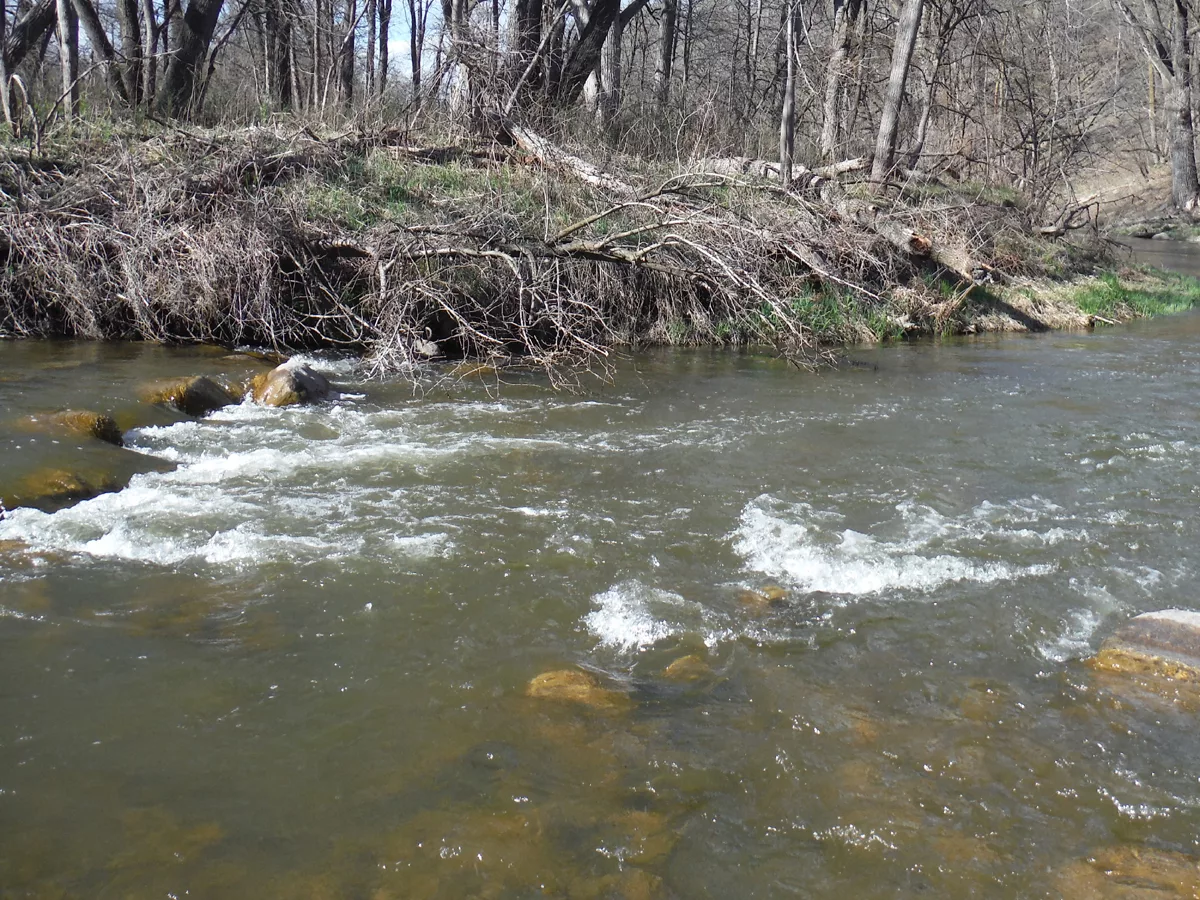
How Many Seams Do You See? From smaller waters to big ones, places where fast water and slow water meet are likely spots to find fish. Learn how to pick them out and explore them to better connect with fish all open water season. Simonson Photo.
By Nick Simonson
When fishing a piece of moving water, whether it’s a small creek in the Black Hills or the swift flow along the grey sand bars of the Missouri River or any stretch of river in between, knowing how to read what the surface and other elements of it present is key in catching fish. Being able to identify current seams, those places where fast water and slow water meet, or the disruption in a flow comes back together behind an obstruction, is key in catching fish consistently all open water season.
Picking these places out – especially in those areas where bends, bars, and even just a boulder disrupt the flow of water, slowing part of it down in comparison to the faster portion – help pinpoint the places where gamefish of all stripes lurk in ambush. There, they conserve their energy against the moving water and watch for prey items to wash by. The slower water gives them a chance to dart out into the quicker-moving water and snatch up those items washed down by recent rainstorms such as nightcrawlers and other terrestrial items as well as any schools of baitfish which might pass in front of them.
In times of heightened activity, it’s possible to find fish like walleyes aggressively feeding closer to or actually in the faster water, but most other times they’ll use the change in flow to their advantage.Other fish like smallmouth and largemouth bass will be more inclined to lurk behind the breaks created by bars, or a stretch of boulders which break the flow, providing those resting areas, but they will launch out into the quicker water if a bait is properly presented.
Current seams that divide fast and slow water are relatively easy to detect. Simply look at the surface for a roil or a physical dividing line up top that separates the two areas of water. Additionally, looking below the surface for debris and detritus in the water that moves a bit slower on one side of the area or swirls along more leisurely to point out the slower stretch where fish may be lying in wait. Eddies too are often easier to detect as they spin off side of the faster moving water. These pockets are often larger and occupy more of the area just off the seam and are worth a few casts or presentment of bait for a longer time, as they naturally attract fish with the slow-moving current that swirls potential prey through the space in an easy fashion.
Even in fast moving streams where trout are the target, seams are a key element and form frequently simply due to the changing flow against a bank or a drop in elevation. Strewn rocks on the stream bed can also create seams that trout – evolutionarily designed for fast-moving water – will utilize. While the water may still appear to be moving quickly behind these obstructions, it’s slow enough to provide a space where trout can sit and wait. While microcosmic, the same principle of the trout stream applies to bigger waters as well; find the slow-moving water adjacent to fast moving water, and you’ll likely find fish somewhere in or near that juncture.
As summer approaches, use the warming water and the growing patterns of fish of all kinds on your nearest flow to practice reading a river and finding current seams. Find those areas where bars and rocks and even bridges break the flow and look for fish in and along the seams created by those changes. Odds are, as things heat up, so will the activity as walleyes, bass, trout and more look for an easy place to rest and an even easier summer meal, including your offerings presented in the many current seams on the many wonderful rivers…in our outdoors.
